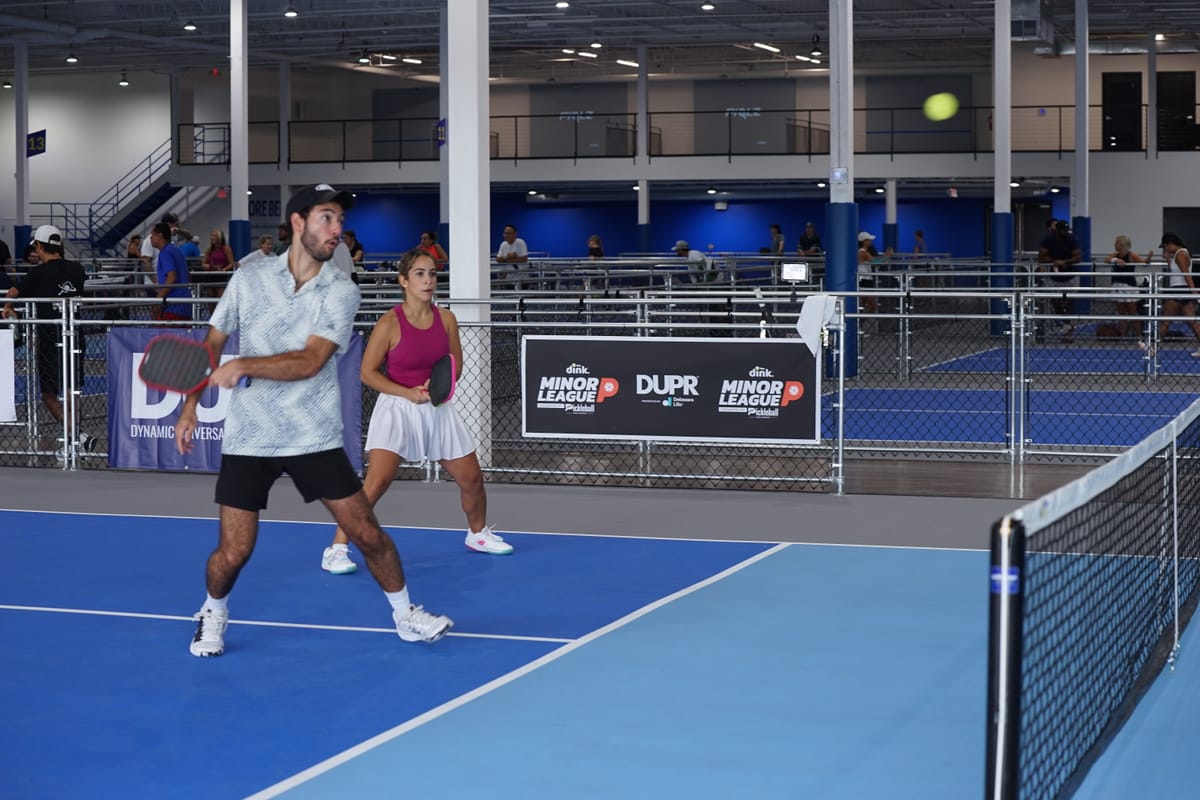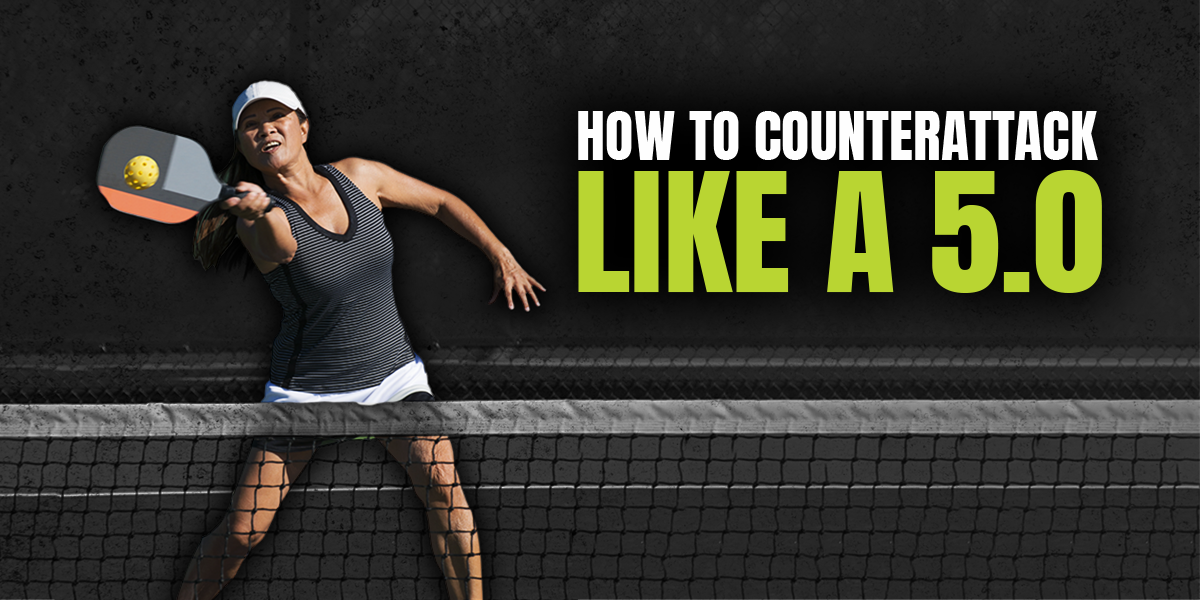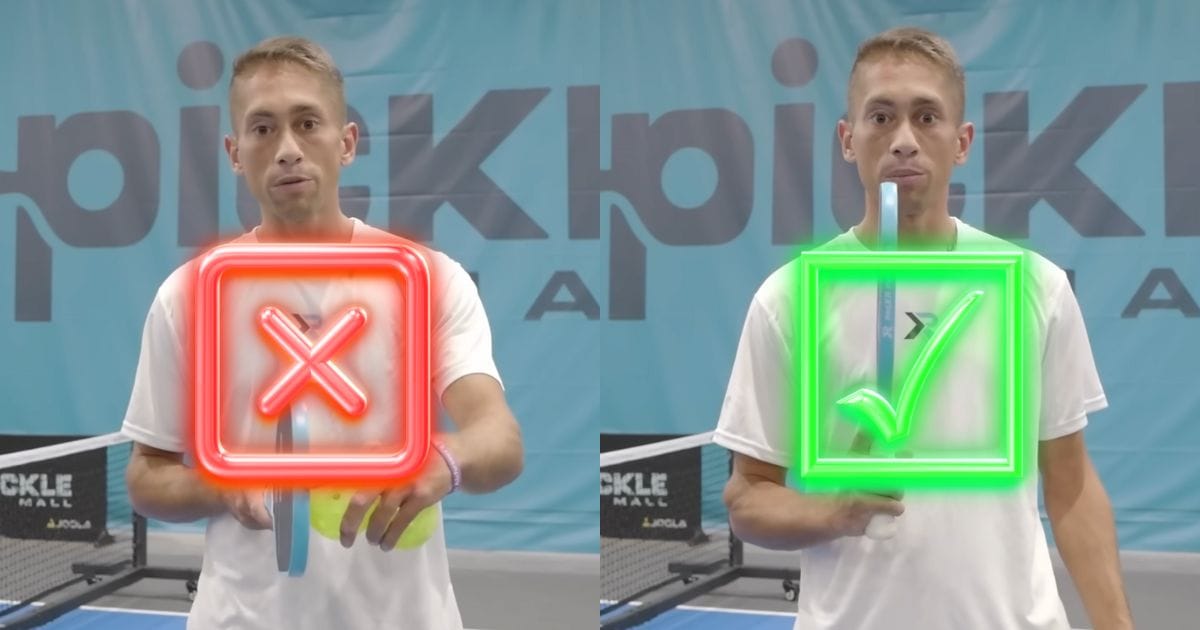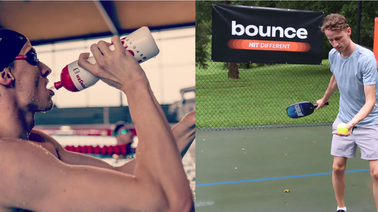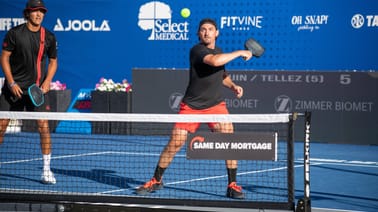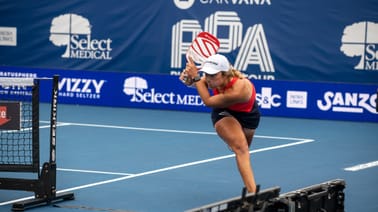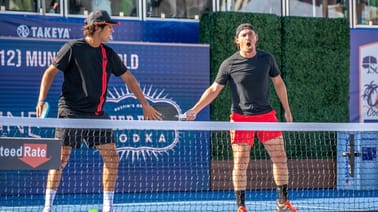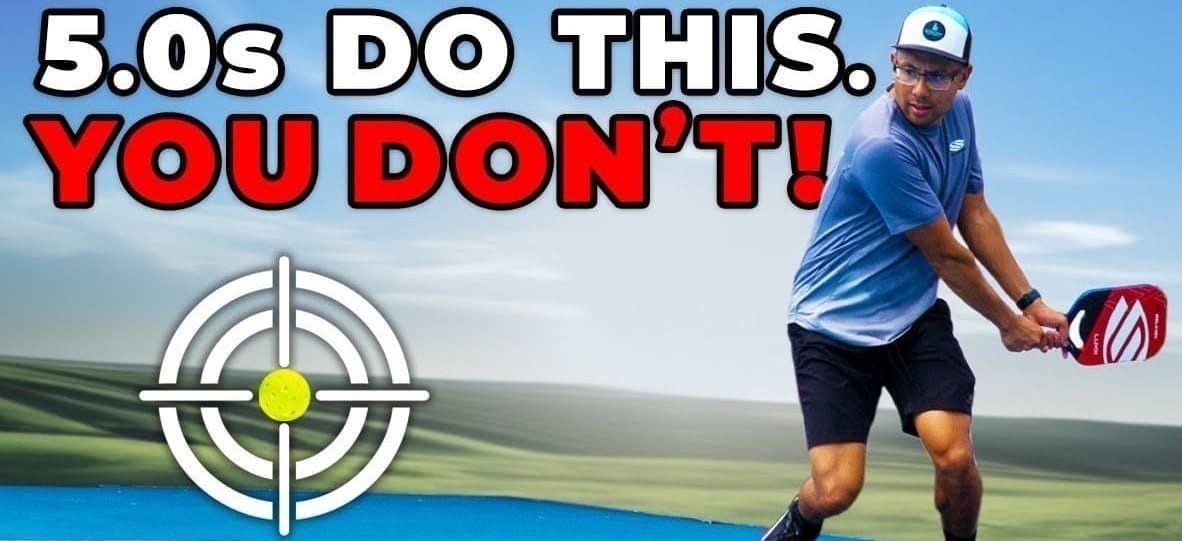
5 Secrets That Will Get You From 4.0 to 5.0 Fast | Jordan Briones
In a recent video, pickleball instructor Jordan Briones teaches us the five secrets of 5.0 pickleball players and how we can use them to elevate our games.
Here are five key habits, broken down into what players get right, what they get wrong, and actionable steps to help you implement them in your game.
#1. Balance and Stability in Transition
What Players Get Right:
High-level players are always balanced when hitting their shots, especially in the transition zone. They stop, set their feet, and create a stable stance before making contact with the ball.
What Players Get Wrong:
Many players hit the ball while they’re still moving or stepping, particularly in the transition zone after a return. This lack of balance leads to less control over the shot.
Actionable Steps:
- Focus on stopping and setting your feet before each shot.
- Practice the split step as you move forward to the net, ensuring you are in a wide, stable stance.
- Slow down and prioritize balance over rushing to the net.
#2. Forward Momentum on Returns
What Players Get Right:
Top players use forward momentum when hitting their returns, moving toward the net as they hit the ball. This gives them a head start in reaching the non-volley zone and puts them in an offensive position.
What Players Get Wrong:
Some players hit returns while standing still or even moving backward, especially if they stand too close to the baseline. This forces them to rush toward the net after hitting the ball, often resulting in weak returns or poor positioning.
Actionable Steps:
- Stand far enough behind the baseline to give yourself room to step into the return.
- Focus on moving forward through the shot, using your body’s momentum to help you reach the non-volley zone faster.
- Practice different types of returns (slice, groundstroke) while ensuring you are stepping into the ball.
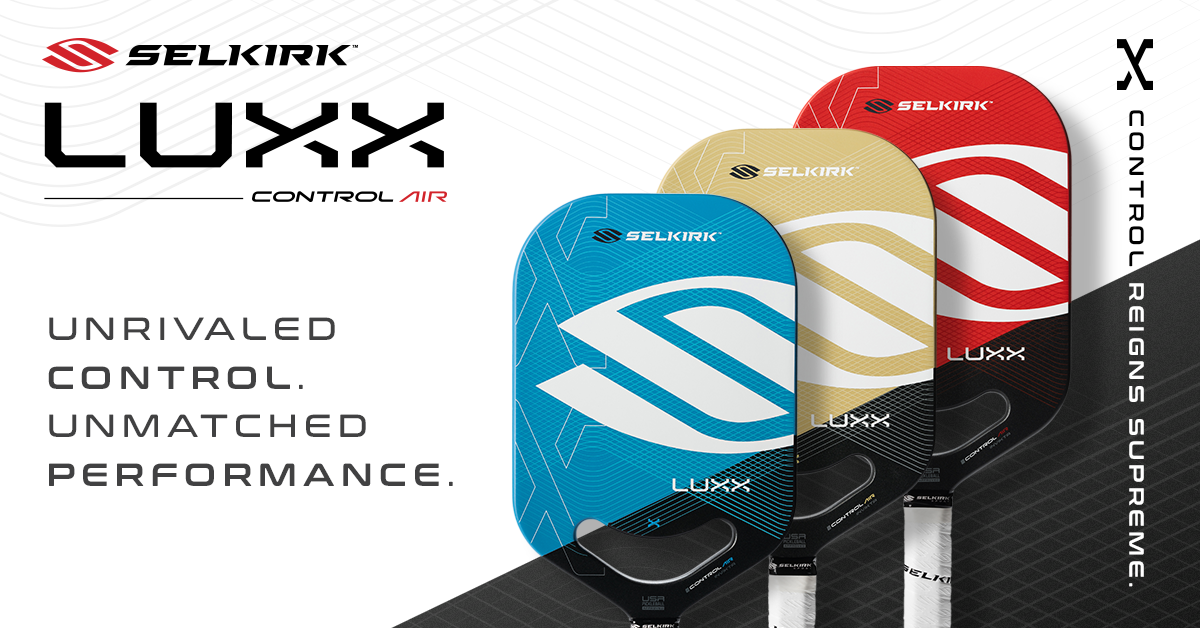
#3. Counter-Attack Mentality
What Players Get Right:
High-level players expect fast balls and look for opportunities to counter-attack. They are always prepared to handle pace and respond with offense, showing their opponents they can manage quick exchanges.
What Players Get Wrong:
Many players are defensive-minded, reacting by blocking and resetting instead of being ready to counter. This gives their opponents the green light to keep attacking, putting them on the back foot.
Actionable Steps:
- Train your mind to expect fastballs and be ready to counter instead of just blocking.
- Look for opportunities to stay aggressive, even when defending against a speed-up.
- Practice counter-attacks with a partner, focusing on staying calm and in control during fast exchanges.
4. Consistent Ready Position
What Players Get Right:
Top players always return their paddle to a central ready position after every shot, which helps them prepare for the next ball, especially in quick hand exchanges at the net.
What Players Get Wrong:
Many players drop their paddle after a shot or leave it in an awkward position, like down by their side after a forehand or backhand. This delays their reaction time and makes it harder to respond to fast shots.
Actionable Steps:
- After every shot, return your paddle to a centered, ready position immediately.
- Keep your paddle up and in front of your body, avoiding the habit of dropping it down by your side.
- Think of your paddle being magnetically pulled back to your ready position to build this habit into your muscle memory.
5. Placement Over Power
What Players Get Right:
Advanced players prioritize placement over power. They target specific spots on the court with their shots, even when attacking, instead of focusing solely on hitting the ball hard.
What Players Get Wrong:
Many players, especially when they see a high ball, just try to hit it as hard as they can without aiming for a particular spot. This often leads to an easy counter for opponents, who are prepared for the pace.
Actionable Steps:
- Focus on hitting your spots rather than how hard you can hit the ball.
- During your attack shots, predetermine a specific target to aim for, rather than focusing on pure power.
- Practice with an emphasis on accuracy, visualizing specific locations to place the ball, whether it’s a dink or an overhead.
By focusing on these five key habits, you’ll not only improve your own game but also develop the consistency and control necessary to compete at higher levels.
Watch the full video from Selkirk-sponsored Jordan Briones here:



